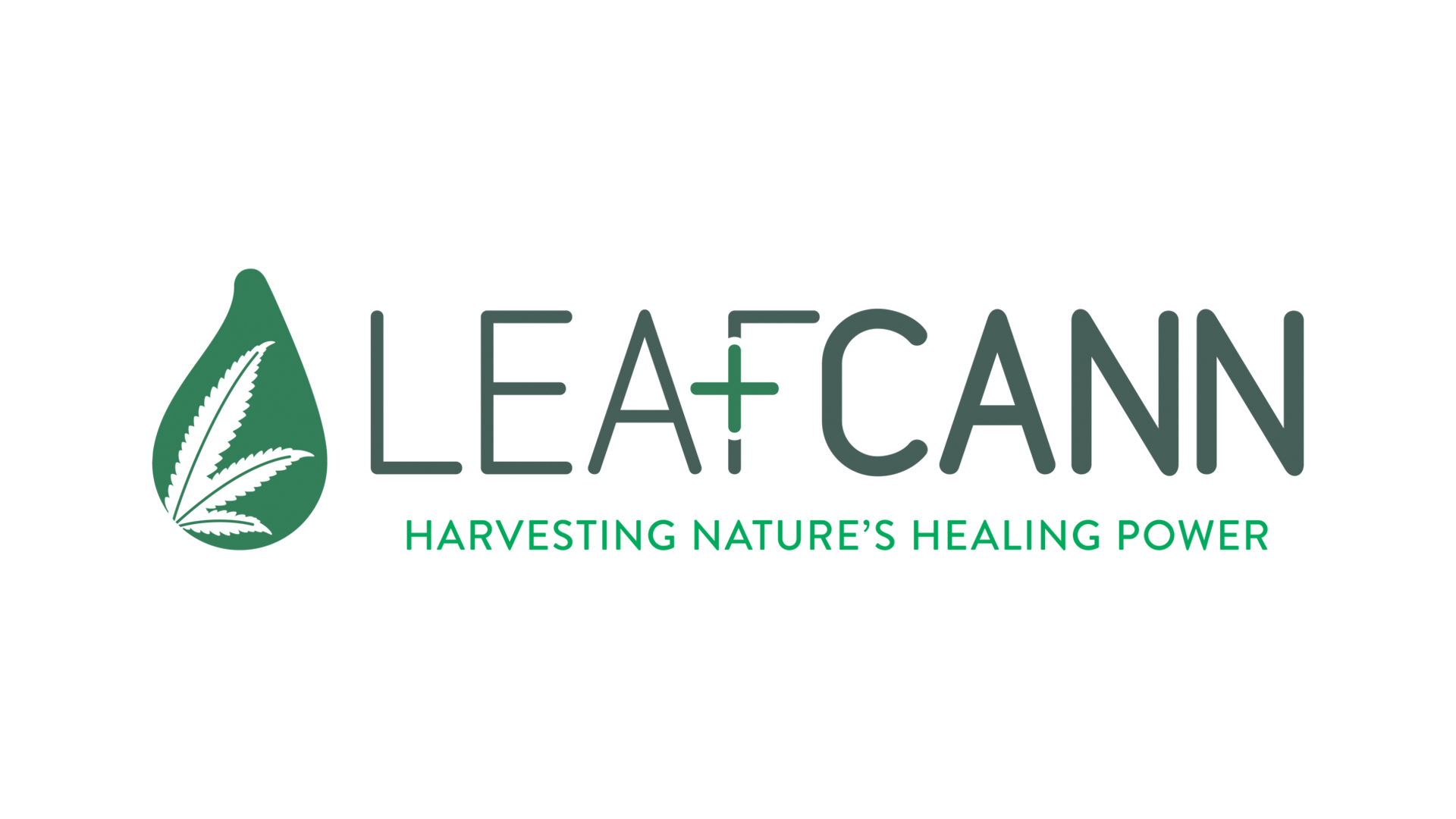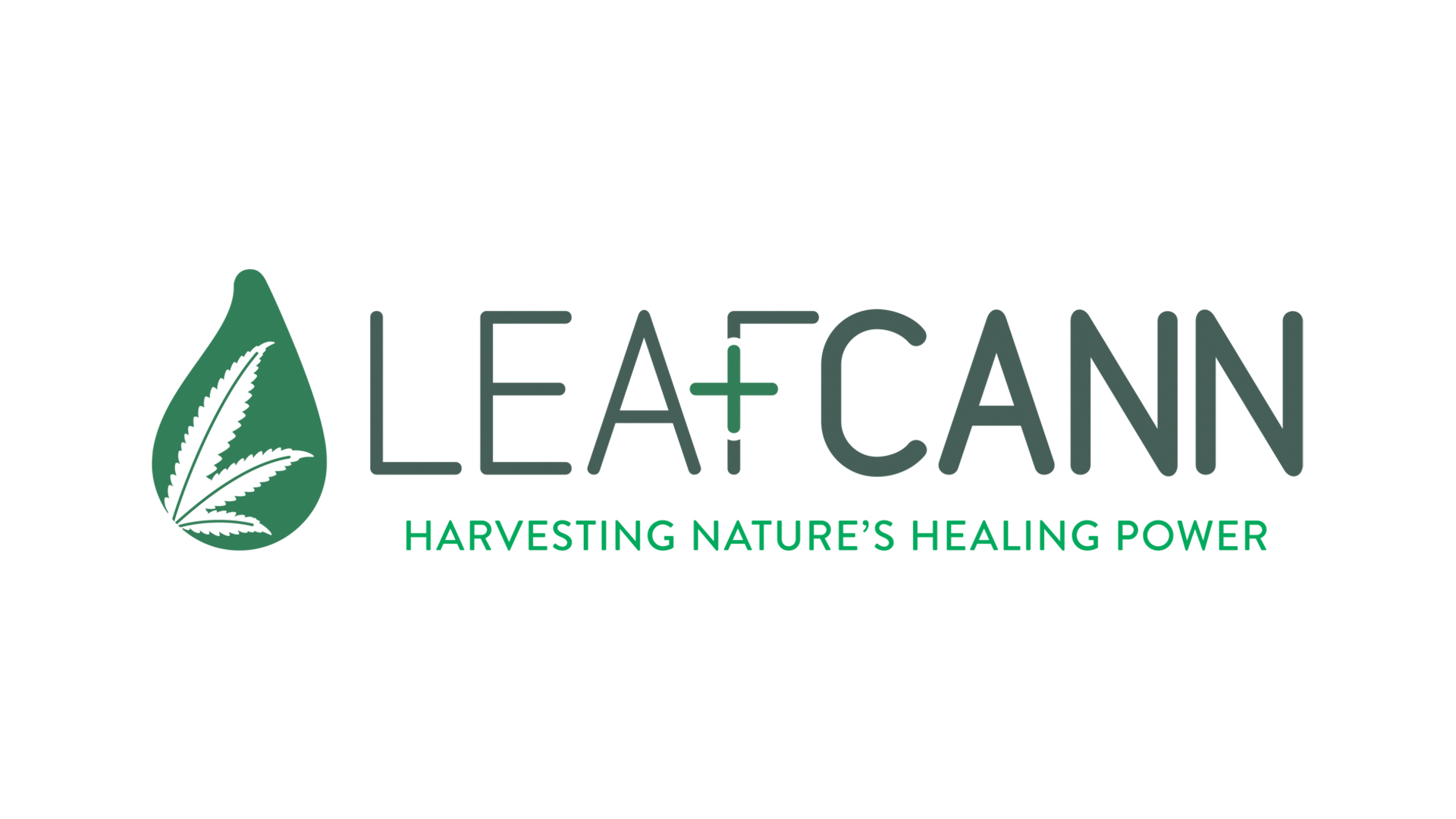
The topic of opioids versus medicinal cannabis for chronic pain is widely discussed with researchers and medical professionals taking a firm stance. Here, medicinal cannabis experts from Leafcann outline the science behind pain, the rise of opioid use and medicinal cannabis for chronic pain.
‘Cannabinoid’, often referred to as medicinal cannabis, is a term given to the naturally occurring plant molecules secreted by trichomes (fine hairs or appendages) that can be found in the cannabis plant.
Around the world, common conditions for which medicinal cannabis, are prescribed, or used, include chronic pain, spasticity associated with multiple sclerosis, nausea, epilepsy, HIV/AIDS, as an adjunct treatment for cancer to alleviate the symptoms of chemotherapy, and degenerative neurological conditions.
Of these conditions, patients using medical cannabis for chronic pain is very common.. Chronic pain is defined as constant daily pain for three months or more in the last six months.[1] About one in five Australians experiences chronic pain.[2]
Studies in US. state jurisdictions where medicinal cannabis has been legalised have found that a very high percentage of patients are using medicinal cannabis for chronic pain. In Colorado, for instance, 94% of medicinal marijuana cardholders cited “severe pain” as their medical condition.[3]
In one of the most comprehensive reviews to date, the U.S National Academy of Sciences, Engineering and Medicine considered over 10,000 abstracts from research published since 1999 that addressed the health impacts of cannabis and cannabis-derived products. As part of this review, the committee analysed the therapeutic uses of cannabis and concluded there was “evidence to support [the idea] that patients who were treated with cannabis or cannabinoids were more likely to experience a significant reduction in pain symptoms.”[4]
Another comprehensive, Harvard-led study examined the efficacy of cannabis to treat various pain and medical issues, and found that the “use of marijuana for chronic pain, neuropathic pain, and spasticity due to multiple sclerosis is supported by high-quality evidence.”[5]
The Science of Pain
Pain is a very complex issue. While it is generally viewed as a symptom of an underlying condition – nociceptive pain – it can also be due to a disorder of the nervous system – neuropathic pain. In either case, the neural pathways that carry the pain signals from the periphery to the central nervous system where it is perceived are switched on and off by several neurotransmitters interacting with their receptors. The discovery, in the 1980s, of the opiate receptor (later shown to have several subtypes) and the endogenous ligands, enkephalin and endorphin provided an insight into pain mechanisms and resulted in the development of a large number of synthetic ligands for the opiate receptor(s), many aimed at modulating pain. Most of these have been based on exogenous opiates – morphine from opium – although there have been numerous attempts to synthesise analogues of the endogenous opiates in the hope of finding an effective analgesic without addictive properties, this has not been successful. Morphine analogue opioid molecules have become both a critically important tool in pain management and drugs of serious abuse.
The story of cannabis follows a somewhat similar path to opiates derived from plants. The exogenous, plant-based ligand tetrahydrocannabinol from the cannabis plant, was found to bind to specific endogenous receptors (CB1 & CB2), for which were later found endogenous ligands (anandamide, 2-AG). There are, however, some key differences. First is the lower specificity of both endogenous and exogenous ligands for the receptors, together with variable affinity; and second is the tendency for the endocannabinoid system to be located more broadly than the nervous system. It is these features that may result in the less addictive nature of cannabinoids where any tendency for repeated use is more due to habituation than formal addiction as seen with opioids.
The problem with opioids
Opioids have a highly addictive nature that can creep up gradually without someone knowing they’ve become addicted; this can occur with over-the-counter medications such as loperamide, commercially known as Imodium, and codeine. However, addiction to stronger opioids can be very quick and insidious, and this has been widely documented with opiates such as, morphine or heroin and the synthetic opioid fentanyl.
Opioids can be dangerous because they only require five times the effective dose to be fatal. Cannabis, on the other hand, is estimated to take about 1,000 times the effective dose to be fatal.[6] For context, the low rate of cannabis-related deaths has been consistent around the world for some time. Statistics from Australia reveal that while unregulated cannabis use has been widespread, with some 1.4 million Australians believed to use cannabis illicitly within 12 months, the death rate remains at 0.1 per 100,000. The addition of some 250,000+ medicinal cannabis patients has also not increased this rate.
By contrast, in 2018, opioids were present in nearly two-thirds of drug-induced deaths (64.5% or 1,123 deaths) — a rate of 4.6 per 100,000 population according to the Australian Bureau of Statistics. To further underline the safety of cannabis, 6,000 Australians died from alcohol use in 2015, with more than 144,000 hospitalisations in the years 2012 -2013, remaining stable at 5.2 deaths per 100,000 or up to and including 2017. Tobacco accounts for more than 15,500 deaths per year. When we compare safety profiles and access, it is ridiculous to consider medicinal cannabis presents any real risk to the public, as it accounts for 0.1 deaths per 100,000 in Australia.
In 2016, more than 90 Americans a day died from opioid overdose, resulting in more than 42,000 deaths per year, which is more than died from car accidents and shooting deaths.[7] Over 500,000 deaths since 2000 have been caused or implicated by, opiate overdose. This isn’t such a surprise when you consider the number of opioid prescriptions in the U.S increased to over 600,000 per day. That is an increase of over 400% since 1999.[8]

In Canada, health authorities have been dealing with cannabis derivatives since July 2001, when the government legalised access and production of medicinal cannabis. In October 2018, the Canadian Government took the step of legalising adult use of cannabis. At present, health authorities have accepted a maximum dose of 10mg THC, however, most doctors recommend a dose somewhere between 2.5 and 5 mg of THC for medicinal cannabis patients.
There were almost 300,000 medicinal cannabis patients in Canada in March 2021 who had at least one prescription. Better labelling and education around cannabis products and their use has resulted in more informed choices by consumers but has not led to increased usage, with medicinal cannabis rates remaining stable over the last two years, despite the pandemic.[9]
In Australia, the misuse of opioids hasn’t reached the levels recorded in the US. However, the increasing number of deaths from opioid overdose is alarming. Australia’s Annual Overdose Report in 2017 showed that during 2011-2015, 3,601 people died from an opioid-related overdose. This was twice the amount that died during the period 2001-2005.[10] Accidental deaths from oxycodone, morphine or codeine were responsible for most opioid-related deaths.[11]
According to the Australian Annual Overdose Report 2021 tracking deaths from illicit and prescribed drug usage: “Unintentional drug-induced deaths comprise approximately three-quarters of all drug-induced deaths and this proportion has remained relatively constant between 2001 and 2019 (ranging from 70% to 79%, with an average of 74%). Both are continuing to trend upwards and are increasing more rapidly than the population is growing. From 2001 to 2019, the population of Australia increased by 31.6% (from19,386,461 persons in December 2001 to 25,522,169 persons in December 2019). In comparison, over the same period, the number of all drug-induced deaths has increased by 69.6% (from 1,313 to 2,227), and unintentional drug-induced deaths have increased by 67.6% (from 981 to 1,644).”[12]
Pain is a pervasive problem, with limited long-term treatments. A 2017 consumer survey found that 53.2% of Australians used ibuprofen in the previous year; 48.8% used codeine and 14.9% used oxycodone. [13] The same survey found that 49.5% of Australians surveyed believed it was not possible to become addicted to prescription opioids, with one in five people self-medicating and 14% admitting to taking painkillers not prescribed to them. NPS Medicine wise found that around 12% of Australians exceed the daily dose of opiate medicines and there is increasing use of combining opioids with sedatives such as alcohol, benzodiazepine and sleeping tablets.[14]
In Australia, codeine is now only available by prescription after a growing concern amongst medical professionals regarding its overuse and ease of access. This has created new problems, with anecdotal evidence of patients going to the dark web to access prescription-only medication such as codeine.[15]
In a five-year review of Australian hospital admissions relating to the misuse of over-the-counter painkillers containing codeine, researchers from the University of South Australia identified a million-dollar cost for the health care system. In their review, researchers examined the records of one 593-bed Australian hospital for five years and found that 99 admissions (involving 30 patients) resulted from over-the-counter codeine misuse at an estimated cost of just over AUS$1 million – an average cost per admission of $10,183.[16]
Enter medicinal cannabis for chronic pain
There is a growing body of research that shows that cannabis can be as effective as opioids to treat chronic pain. A 2016 study found that while medicinal cannabis for chronic pain was effective, it also reduced the use of opioids in chronic pain patients by 64%and decreased the side effects from other medications.[17] This finding is supported by a study conducted in 2017, in which prescription data obtained from American Medicare Part D enrolees was analysed and found that there was a significant reduction in opioid use in favour of medicinal cannabis.[18] To put this into perspective, states that had legalised medicinal cannabis had 2.21 million fewer daily doses of opioids prescribed per year than those where medicinal cannabis is not legally accessed (noting that this does not include the privately insured population as there are no published data from this population available).
Another study looked at Medicaid (government aid for those with limited or no income) prescription data and found that states with medicinal cannabis laws and adult-use cannabis laws had lower opioid prescribing rates (5.88% and 6.38% lower, respectively) than those where cannabis was not accessible.[19]
In addition to the reduction in opiate usage, hospitalisation rates for opioid painkiller dependence and abuse dropped, on average, around 23% after cannabis was permitted for medicinal purposes. Hospitalisation rates for opioid overdoses dropped 13% on average.[20] Therefore, the introduction of medicinal cannabis as a substitute for opioids was significantly associated with reduced opioid-related hospitalisations. However, there were queries regarding associations with cannabis-related hospitalisations which required further research.[21]
The link between the legalisation of medicinal cannabis and reduction in opioid use is not a new concept. In 2014, a study found that US states with legalised medicinal cannabis had 24.8% fewer opioid overdose deaths between 1999 and 2010,[22] while a recent study of Colorado’s cannabis legalisation found that the increasing growth in opioid-related deaths from previous years appeared to have been arrested and reversed.[23]
What is happening in Australia?
Australia’s medicinal cannabis prescribing is growing rapidly, exceeding 250,000 prescriptions since legalisation, with the majority of prescriptions written for the treatment of pain. Compared to opioid prescription, however, it is still in its early stages.
Advocates such as Dr Caldicott, an emergency physician and well-known proponent of harm reduction in Australia, support the use of medicinal cannabis for chronic pain Instead of opioids.
“Patients are taking themselves off the opioids and the benzos because they are getting the same effect from a product that is far safer,” Dr Caldicott said, in reference to the success of medicinal cannabis in some states within the US.[24]
As Dr Caldicott and many other Australians have acknowledged, Australia’s choice of treatment for chronic pain has been influenced heavily by the pharmaceutical industry. Referring to specialist pain physicians who refuse patients prescriptions of medicinal cannabis for chronic pain, he says “It’s just a little bit bizarre the most obvious intervention we could make is medicinal cannabis, which pretty much every country across the world is doing, but we are still dithering with it.”
Australian advocates for medicinal cannabis as an option in chronic pain treatment include former Chronic Pain Australia president Coralie Wales and the many celebrated members of Harm Reduction Australia.
Australia must be vigilant and act quickly to avoid the opioid overuse situation found in many parts of the US. A good case in point is the state of Illinois, where in 2018 they endorsed a proposal that would see medicinal cannabis become available to those who qualify for opioid prescriptions.
However, in the US, many scientists are struggling to find non-pharmaceutical alternatives such as medicinal cannabis because of the difficulty accessing ‘government approved’ cannabis with which to conduct research. In some cases, it is not uncommon for the process to take up to seven years just to obtain the necessary licences.
The situation is even worse in the UK, where NHS patients have not been able to access medicinal cannabis for chronic pain and other conditions such as anxiety via their GP. The only legal option in the UK is to turn to private specialist clinics, with exorbitant fees and little security of supply. This is out of reach for most chronic pain patients and often results in patients turning to illicit drug supplies. This, combined with a UK-wide clamp-down on opioid prescriptions, has left many patients feeling they have been abandoned, with few legal options.
“There is a growing body of scientific literature suggesting that legal access to marijuana can reduce the use of opioids as well as opioid-related overdose deaths,” said Melissa Moore, New York deputy state director for the Drug Policy Alliance. “In states with medical marijuana laws, we have already seen decreased admissions for opioid-related treatment and dramatically reduced rates of opioid overdoses.”[25]
Conclusion
Governments and pain specialists demand more research on the effectiveness of medicinal cannabis for chronic pain and other conditions; however, the industry is too young and lacks the depth of investment to drive this by itself. More research grants are required to drive cannabis research if governments are serious about fixing the damage caused by pharmaceutical and illicit opioid overuse around the world. Furthermore, the harm profile of medicinal cannabis is so low that introducing cannabinoid treatments for pain would not only reduce suffering but would simultaneously reduce the health and productivity costs of persisting with opioid treatment or leaving patients with few effective treatments for their suffering.
References
1: Australian and New Zealand College of Anaesthetists. National pain strategy: pain management for all Australians. Melbourne: ANZCA, Faculty of Pain Medicine, Australian Pain Society, Chronic Pain Australia, 2010. [Online] (accessed 9 February 2015)
2: Henderson JV, Harrison CM, Britt HC, et al. Prevalence, causes, severity, impact, and management of chronic pain in Australian general practice patients. Pain Med 2013;14:1346–61. [Pubmed]
3: Light, M. K., A. Orens, B. Lewandowski, and T. Pickton. 2014. Market size and demand for marijuana in Colorado. The Marijuana Policy Group. http://mjinews.com/market-size-and-demand-for-marijuana-in-colorado/ (accessed 3 June 2018).
4: National Academies of Sciences, Engineering, and Medicine. 2017. The Health Effects of Cannabis and Cannabinoids: The Current State of Evidence and Recommendations for Research. Washington, DC: The National Academies Press. https://doi.org/10.17226/24625.
5: Hill KP. Medical marijuana for treatment of chronic pain and other medical and psychiatric problems: A clinical review. JAMA. 2015;313:2474–83. [PubMed]
6: https://www.ncbi.nlm.nih.gov/pmc/articles/PMC4311234/
7: US Centers for Disease Control and Prevention. https://www.cdc.gov/drugoverdose/index.html (accessed 3 June 2018).
8: Is Cannabis Better for Chronic Pain than Opioids. https://www.leafly.com/news/health/cannabis-for-chronic-pain-vs-opioids. (accessed 3 June 2018).
9: Health Canada releases new data on cannabis use in Canada. https://www.canada.ca/en/health-canada/news/2021/12/health-canada-releases-new-data-on-cannabis-use-in-canada.html
10: Australia’s Annual Overdose Report 2017. Pennington Institute. http://www.penington.org.au/australias-annual-overdose-report-2017/ (Accessed 3 June 2018)
11: Fatal fentanyl overdoses rise as Australians turn to more potent painkillers https://www.theguardian.com/australia-news/2017/aug/31/fatal-fentanyl-overdoses-rise-as-australians-turn-to-more-potent-painkillers
12: Australian estimated resident population data are available from ABS (2020). National, state and territory population,
December 2019. Australian Bureau of Statistics: https://www.abs.gov.au/statistics/people/population/national-state-andterritory-population/dec-2019
13: Opioid-painkiller-dependence-consumer-survey-key-findings_FINAL-1.pdf. Ogilvy PR Health. http://www.scriptwise.org.au/wp-content/uploads/2017/02/Opioid-painkiller-dependence-consumer-survey-key-findings_FINAL-1.pdf. (Accessed 3 June 2018)
14: https://www.smh.com.au/healthcare/more-than-two-million-australians-are-exceeding-recommended-medicine-dosage-worrying-doctors-20170815-gxwjyg.html
15: Fatal fentanyl overdoses rise as Australians turn to more potent painkillers https://www.theguardian.com/australia-news/2017/aug/31/fatal-fentanyl-overdoses-rise-as-australians-turn-to-more-potent-painkillers
16: Mill D, Johnson JL, Cock V, et al. Counting the cost of over-the-counter codeine containing analgesic misuse: A retrospective review of hospital admissions over a 5 year period. Drug Alcohol Rev, 2017.
17: Boehnke, K. F., E. Litinas, and D. J. Clauw. 2016. Medical cannabis use is associated with decreased opiate medication use in a retrospective cross-sectional survey of patients with chronic pain. Journal of Pain 17(6):739–744.
18: Bradford, A. C., and W. D. Bradford. 2016. Medical marijuana laws reduce prescription medication use in Medicare part D. Health Affairs 35(7):1230–1236.
19:Association of Medical and Adult-Use Marijuana Laws With Opioid Prescribing for Medicaid Enrollees | Adolescent Medicine | JAMA Internal Medicine | JAMA Network. https://jamanetwork.com/journals/jamainternalmedicine/fullarticle/2677000. (Accessed 3 June, 2018).
20: Shi Y. (2017). Medical marijuana policies and hospitalizations related to marijuana and opioid pain reliever. Drug and Alcohol Dependence, 173 , pp. 144-150.
21: Shi Y. (2017). Medical marijuana policies and hospitalizations related to marijuana and opioid pain reliever. Drug and Alcohol Dependence, 173 , pp. 144-150. https://www.drugandalcoholdependence.com/article/S0376-8716(17)30076-5/abstract
22: Bachhuber MA, Saloner B, Cunningham CO, Barry CL. Medical Cannabis Laws and Opioid Analgesic Overdose Mortality in the United States, 1999-2010. JAMA Intern Med. 2014;174(10):1668–1673. doi:10.1001/jamainternmed.2014.4005
23: Melvin D. Livingston, Tracey E. Barnett, Chris Delcher, Alexander C. Wagenaar, “Recreational Cannabis Legalization and Opioid-Related Deaths in Colorado, 2000–2015”, American Journal of Public Health 107, no. 11 (November 1, 2017): pp. 1827-1829. https://ajph.aphapublications.org/doi/abs/10.2105/AJPH.2017.304059
24: Calls for use of medicinal cannabis for pain relief amid codeine restrictions https://www.canberratimes.com.au/national/act/calls-for-use-of-medicinal-cannabis-for-pain-relief-amid-codeine-restrictions-20180131-h0r4np.html. (Accessed 4 June 2018)
25: https://edition.cnn.com/2018/04/02/health/medical-cannabis-law-opioid-prescription-study/index.html









